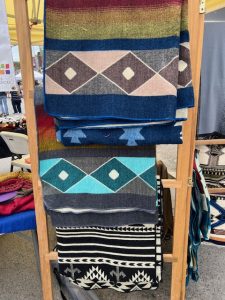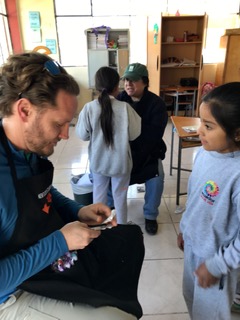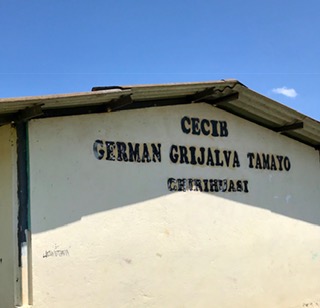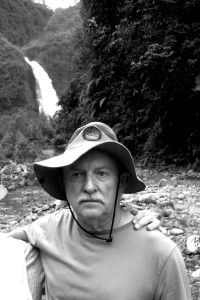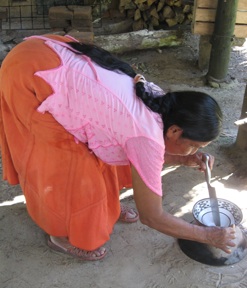It was hot at the Woodlands Art Festival this year, but even so, we sold a lot of wool blankets.
Category Archives: Uncategorized
2019 Dental Project
March 20
La Merced
High above Esperanza
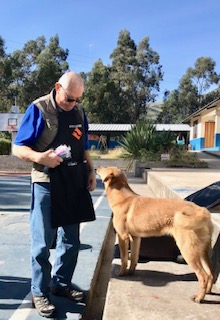
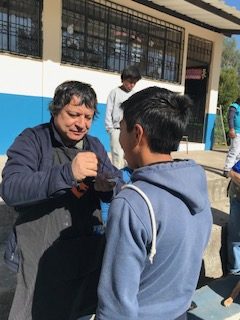
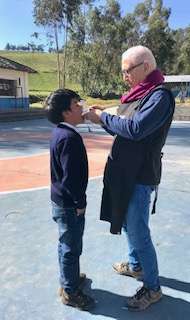
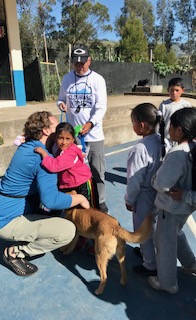
Chiriboga
Another school high above Esperanza, with a view of the backside of Cayambe volcano.

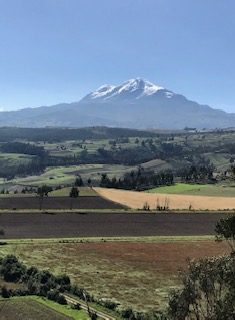
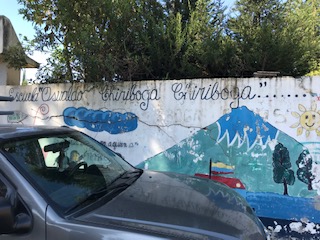

Cheryhuasi.
Another school which may be phased out.
March 7
University of Louisville Associate Dean Amy Shearer Lingo and Ryan Rathman, Manager of International Learning, spent a few days in February on a fact-finding trip, in anticipation of a possible U of L Study Abroad program in Ecuador during Spring Break 2020.
Zuleta
Nicolas Herrera always enjoys working with us.
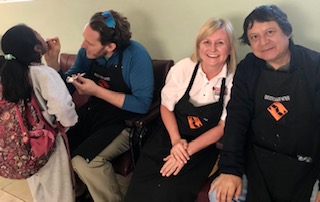
Handing out Beanie Babies
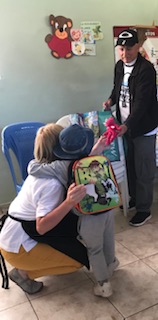
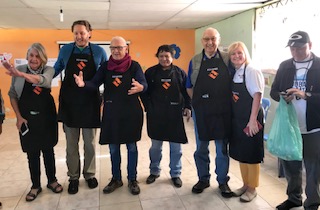
Imbabura
High on Imbabura, the Mother Mountain
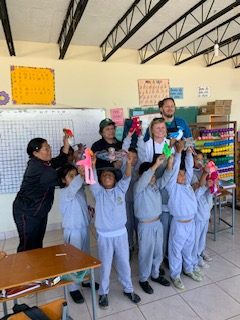
Esperanza

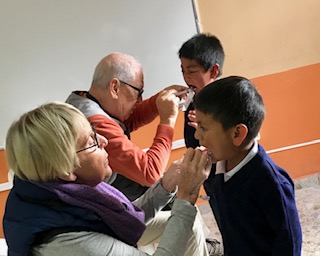
Rumińahua
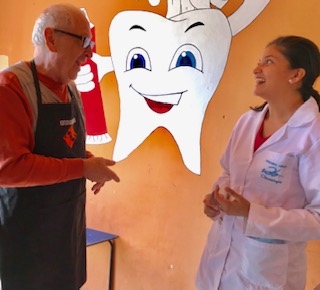

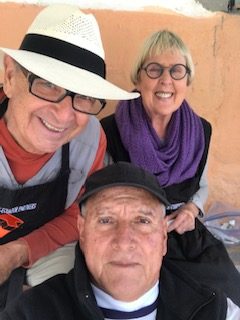
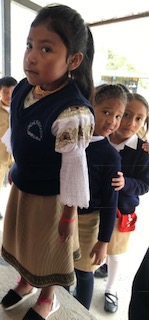
El Abra
The first time we went to El Abra, we were saddened to find they had closed early that day to begin their one-week Spring Break. The government is (maybe) phasing out this school. We later realized there are only 9 students left in this school. Since they live high on Imbabura, surely no bus would arrive to take these kids down to Esperanza for their education. We are hopeful this closing will be rescinded.





La Florida
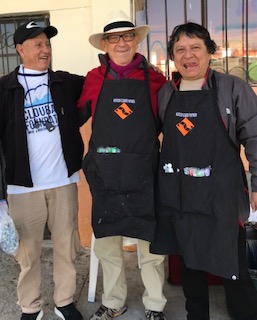
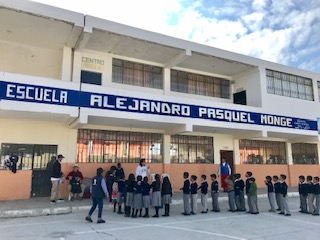
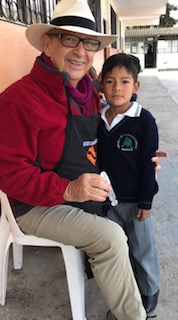

Guapalo
Neighborhood of Quito. Amber Laree, our Partner in the Amazon, cane with two of her 4 daughters to help us.
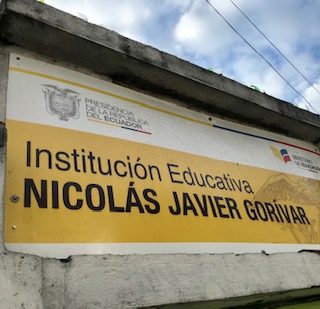
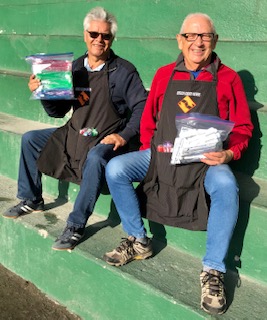
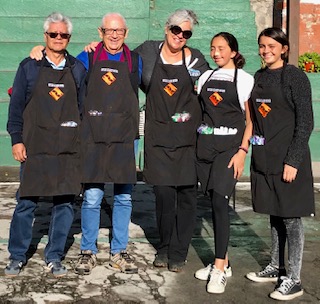
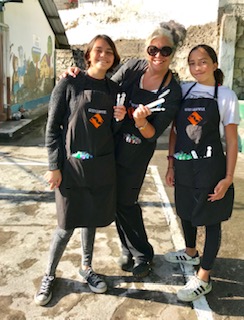
Cayambe
Amber Laree showed up at daybreak to
bring us reinforcements for two schools in Cayambe. Of course Leo Ońa kicked in, also.







Manuel Alban Escuela





Rankin Skinner Soccer Stadium
Applying Varnish on the teeth of the players at the Rankin Skinner Soccer Stadium.
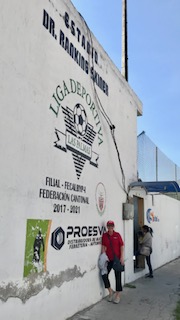
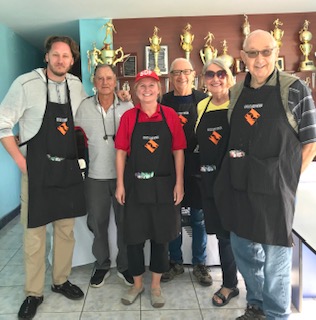

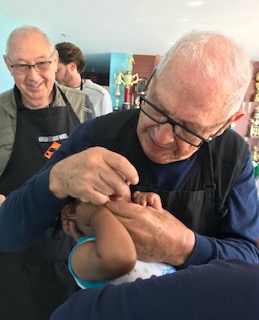



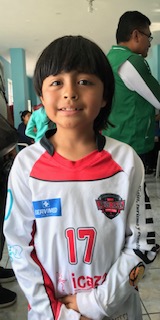
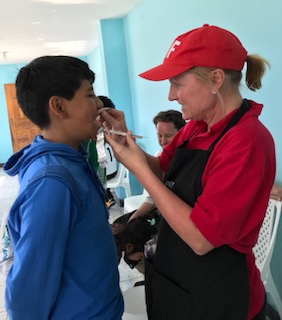

February 13
Cumbaya y Tumbaco
Working with Quito Rotary on Tuesday, Feb. 12
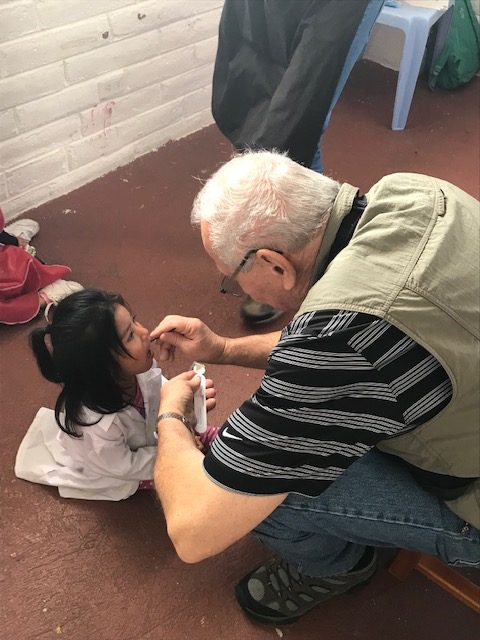

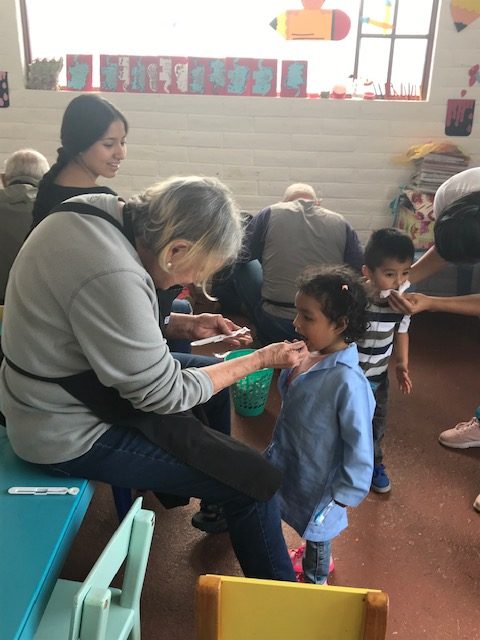
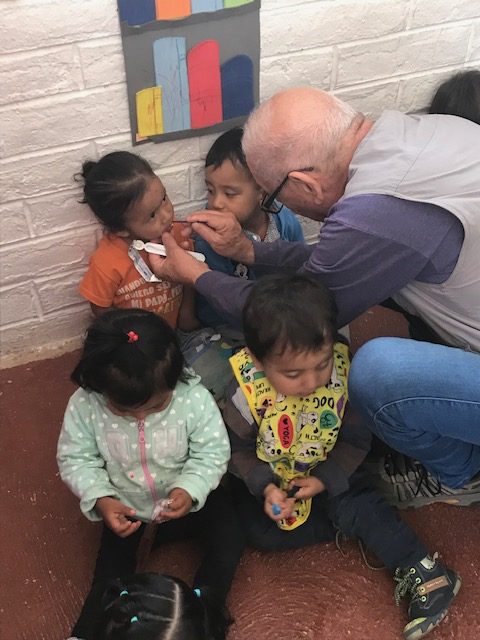

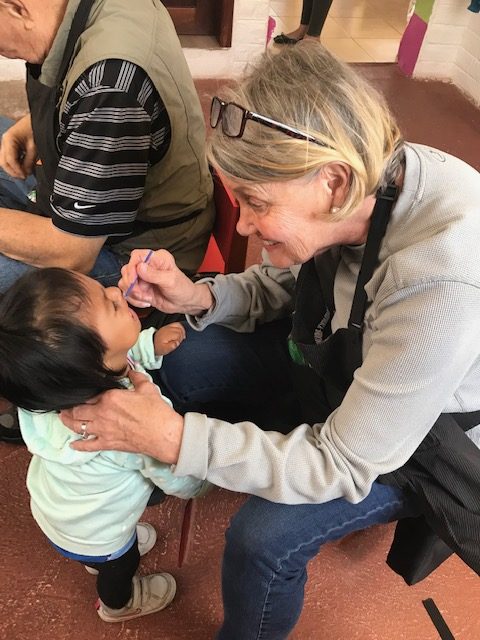
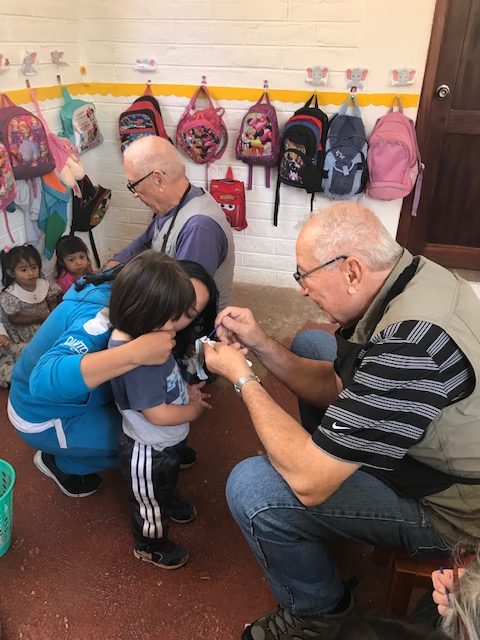
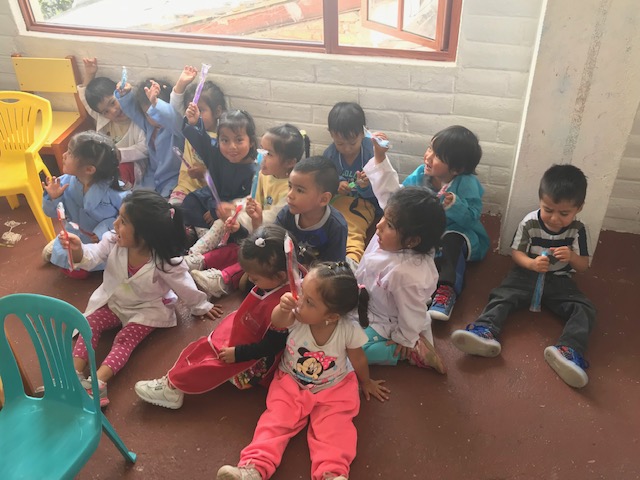
Oyacachi
Oyacachi is situated at 14,500 ft. altitude, the highest in Ecuador. It is the last school in El Chaco Province, at the far edges of Cayambe-Coca National Forest ( home to Spectacled Bears)
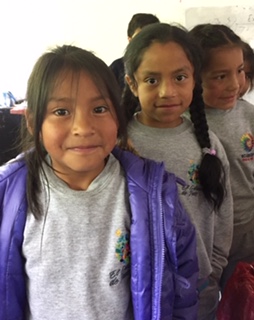

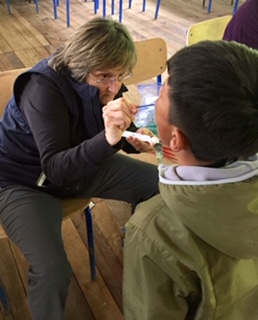

The Mountains – February 6
El Chaco
The Little Angels School
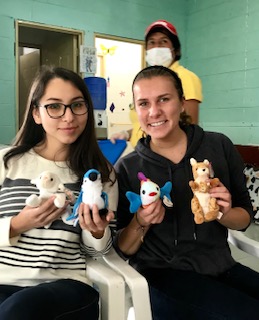
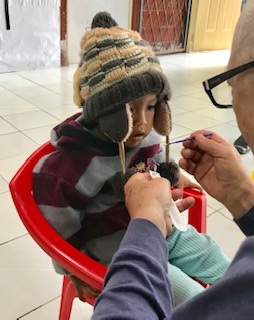
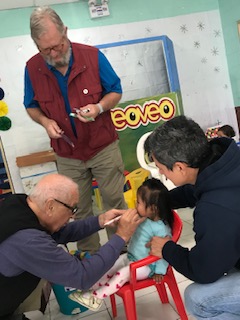
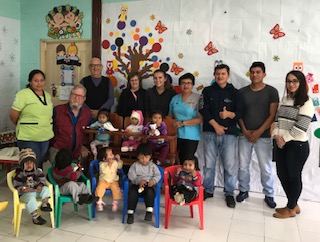
Special Needs
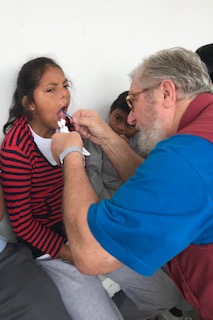
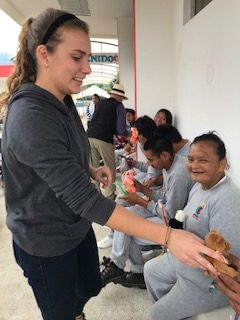

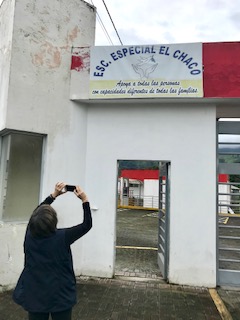
Santa Rosa School




The young woman in the back row, far left is named Jenny. She worked with us to practice her English. She was a good volunteer

The Little Rays of Light

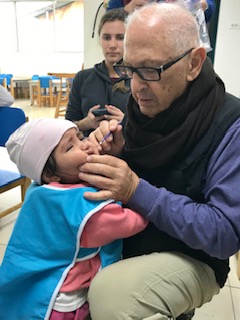
Quito – January 24
Aldec Foundation After-school program, sponsored by Quito Kiwanis.
These at-risk kids are tutored, taught Civics and beginning English, and given a hot meal every school day.
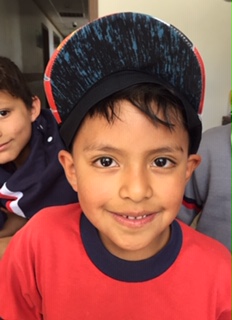
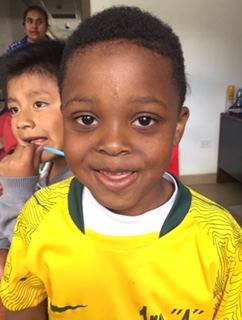

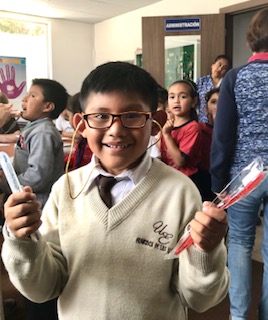
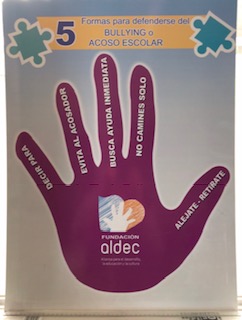
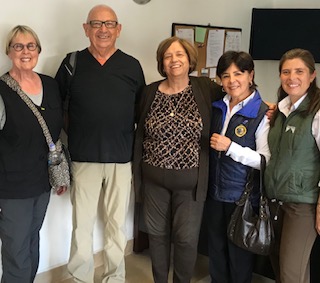
Cotocachi – January 21
All indigenous schools.

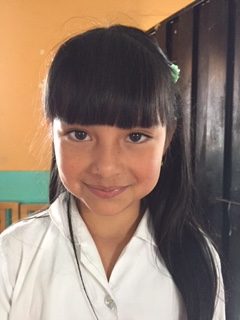




IBARRA – JANUARY 17
The Skinners and Dana Stefaniac visited Nicolas’ studio and had dinner at (daughter) Soly and her husband Lenin’s Arte Vista Cafe. Nicolas is one of two Ecuadorian artists who will exhibit at the Central Library Gallery in the fall of 2019. The other is nude artist Jaime Calderon.


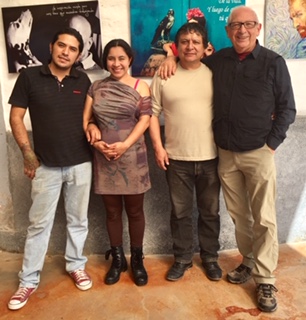
THE COAST – JANUARY 15
Rankin, Roberta and Donald Skinner, and Dana Skinner Stefaniak working in the Dutch foundation school Villa Ticca on January 15.
THE COAST – JANUARY 11
Millennium school and Jaime Polit in Bahia.
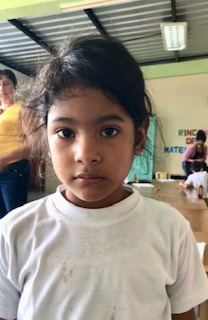
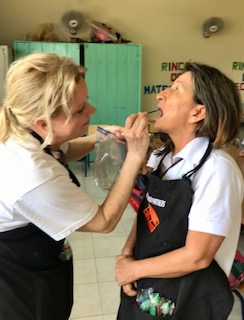
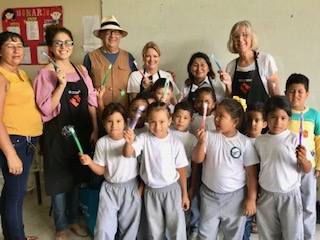
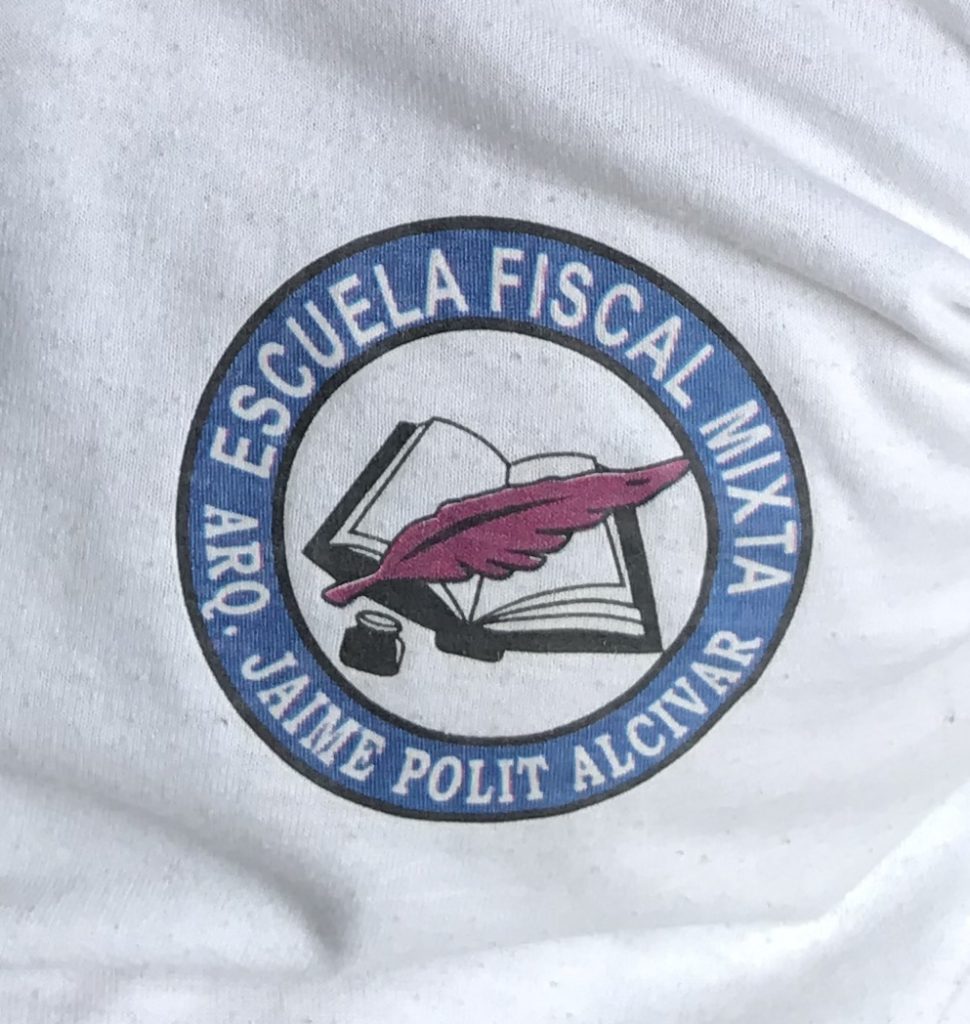
Our new director on the coast, Isabel Sarmiento Betancourt.
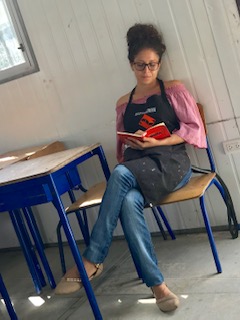
The multi-cultural school in Bahia de Caraquez.



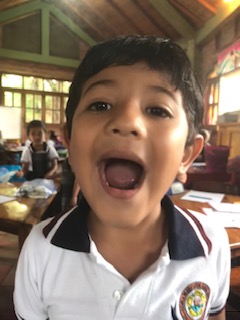


THE COAST – JANUARY 9
KEP members Rankin and Ruthi Skinner, Jan Yon and Terri Berish have been working on the coast this week, in association with the dental project. So far this week, the EDHI has worked in Rio Machacho, Tabuchila, Muyullal, Los Algarrobas, Canoa Beach, Ambache and San Vicente.
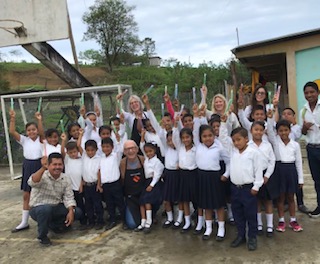
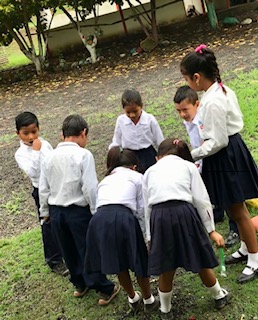


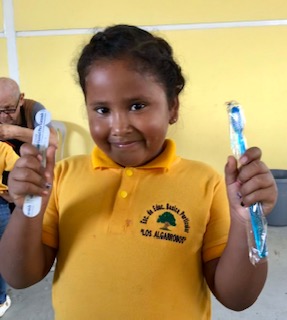

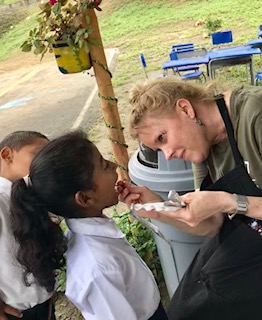

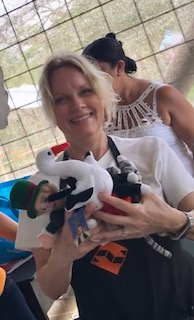

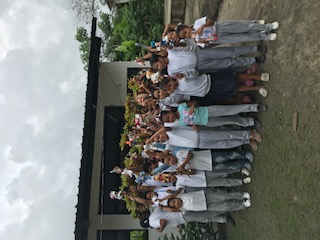
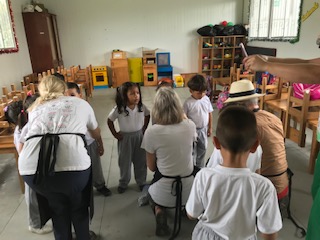
Remembering David Coffey
“I’m not a teacher: only a fellow traveler of whom you asked the way. I pointed ahead – ahead of myself as well as you.”— George Bernard Shaw
We’re stunned by the loss of one of our own, board member, friend, and teacher, Dr. David McMillian Coffey. David’s life, which ended after a brief illness, was celebrated in a service at Western Kentucky University on Sunday, March 30. Family, colleagues, students and dog Coco gathered to remember David. Speakers included the Rev. Jose Anders, Kristy Guffey, Chris George, Dr. Gordon Jones, and his sister, Anne Coffey. Simultaneous translation to Spanish was provided by Dr. Melissa Stewart, music by his niece and nephews Andi, Jody and Adam Dahmer.
As is typical of every experience I ever had with David, I came away from the memorial service having learned a thing or two. A beloved and gifted teacher, the initial truth Dr. Coffey imparted to his Western Kentucky University students was this: “You must get your ass to class to pass.” Not surprising that, even in death, Dr. Coffey packed the room.
Distinguished in the fields of Agriculture and Education, his numerous professional accomplishments are outlined in his obituary. (Click here.); however, clearly, Dr. Coffey’s true resume is written in the hearts, minds and lives of his students. David had an instinct for teaching and the ability to inspire learning. Spend any time at all with David Coffey and you became one of his students. I had the good fortune to travel through Ecuador with a group of WKU students under David’s leadership. Each day, even the most exhausting ones, ended with a group exercise known as “Reflection”. Reflection begins with full glasses of whatever and the toast, “ariba, abajo, al centro, al dentro”, that is, “up high, down low, to the middle, with-in” The toast, accompanied by appropriate gestures, is followed by a question of David’s devising. “What did you learn today? What did you learn about a fellow traveler? Which of your perceptions was challenged today? ” As a non student, a contemporary of David, as a person who generally finds it preferable to watch from the wings, I expected to be spared the oral mini quiz. I wasn’t. Furthermore, it was clear that several of our group were neither comfortable with nor skilled at impromptu speaking. None of us were let off the hook. In time, in a very short time, all of us became more than resigned to Reflection; we became as eager as preschoolers at Show and Tell for the daily ritual. Reflection became a chance to laugh, to learn, to show off what we’d learned, to bond. The following day, the expectation that we’d each be called upon to produce a reflection kept the group alert to the myriad of things that were there to be learned, aware of observations that could be passed on, on the lookout for something unique in a traveling companion. Reflection is more than a fond memory I have of David, it’s an example of the exciting interplay of teaching and learning that results when a master sets in motion the perpetual motion machine that is education.
Last month, Kentucky Ecuador Partners was fortunate to have Dr. Coffey as the guest speaker for our annual meeting. Those in attendance joined the many who can say “I have learned from David Coffey.” The statement “I have learned from David Coffey.” may well stand as the simplest, truest tribute to a complex and precious man.
Kentucky Ecuador Partners will be planting a tree on the campus of Western Kentucky University in memory of Dr. Coffey. If you would like to honor David’s memory, contributions can be made to:
The Dr. David Coffey Scholarship Fund, c/o College Heights Foundation, 1906 College Heights Boulevard 41016, Bowling Green, KY 42101.
Kentucky-Ecuador Partners project fund supporting a WKU student’s travel to Ecuador as part of one of the programs Dr. Coffey originated. Mail to Austin Cantor by April 30 at: 905 Alexandria Dr. Lexington, KY 40504. Please make checks payable to Kentucky-Ecuador Partners and make a note on the check/in the letter as to which fund you are supporting.
Jan Yon
2013 KIIS Scholarship Winner
“Studying in Ecuador and Galapagos Islands is a once in a life time experience. The opportunity to study where Charles Darwin conducted such iconic research in the field of biology is not only beneficial to me, but also the students I will teach.”
We are pleased to announce the 2012 Ecuadorian Education Abroad Scholarship has been awarded to Martin Barker, a junior at Northern Kentucky University. Barker, a biology major, plans to study in The Galapagos Islands as part of the Kentucky Institute for International Studies Experience Ecuador program. For two weeks beginning in May, Martin will travel with a group of students throughout Ecuador, exploring Quito, Baños, and the Amazon Basin.The trip culminates with a week in the Galapagos Island. In addition to research in the field of biology, one of Martin’s goals is to improve the Spanish he’s acquired through university studies and a service learning trip to Mexico.
Kentucky-Ecuador Partners awards one $500 scholarship each year. This is the 4th one that has been awarded. The purpose of the scholarship is to support study abroad in Ecuador, and to increase awareness of the Kentucky-Ecuador Partners of the Americas program among a new generation of students. The scholarship honors Ronn Padgett (1946-2004) who was devoted to the mission of Kentucky-Ecuador Partners. Ronn served the organization as President, member of the Board of Directors, and as chair of numerous committees. Factors taken into consideration for eligibility include academic achievement, financial need, GPA, relevance of the Ecuador program to the applicant’s education and career goals, and previous international experience.
Last year’s recipient was Jazmine Shoup, whose account of her travels may be read in a blog post entitled Oh the Places You’ll Go!( June 8, 2012)
We congratulate Mr. Barker and look forward to his contribution our blog.
Cavities Prevention Through Community Action
Thanks to donations and support from Premier Dental Supply, Americares, and the Western Kentucky University Study Abroad Program, the Dr. Rankin Skinner Dental
Team, consisting of Rankin, Ruthi, Roberta and Donnie spent January, February and March of 2012 in a continuation of their decade-long dental program in Ecuador. The Study Abroad students from WKU brought in Premier’s Fluoride Varnish with ACP, and toothbrushes. Ruthi and I provide the community outreach for their program.
Dr. David Coffey and Dr. Kristie Guffey lead two study abroad programs each year from WKU, in January and March. After an initial training program the students go into the schools and orphanages to place fluoride varnish on kids’ teeth and distribute toothbrushes. The students work in several different communities throughout Ecuador, and are having tremendous successes concerning the dental health of the children in those areas
After the first group of students returns home to Kentucky, we continued to work in several communities on the coast because their school term ends on January 20, due to the oncoming rainy season and flood risk. In these communities we recruited volunteers from local civic clubs, Red Cross, local public officials and dentists in private practice.
After completing our coastal programs we returned to Quito where we worked in local schools Tarqui and Guapalo (our Quito neighborhood), and the public schools in Latacunga. Thanks to all the support we have had and all our great volunteers, we were able to place 16,000 units of fluoride varnish and distribute 8,000 toothbrushes.
This is just a brief overview of our very extensive and complex program. In the near future we will do short reports on some of the activities in the individual communities that we visited.
by Rankin Skinner
Shrunken Heads! Vampire Bats! Monkey on the Grill!
All would be accurate and attention grabbing headlines for a blog post on our recent trip to Ecuador, but rather than focus on the tabloid sensational, I’m opting to introduce several women who are quietly sensational in their own way.
Rebecca is an 82-year old Kichwa woman from Sarayacu, in Pastaza Province. She has raised a large family whose members are at home in the rainforest or in town, hold government posts, and one daughter lives abroad. Along with a group of face-painted, spear-brandishing women, Rebecca once confronted soldiers and oil workers and escorted them to a meeting where the women explained to their captive audience the Kichwa’s connection to the land and that oil exploration violates their relationship with the forest. Rebecca is well respected as a potter who possesses not only technical skills, but also knows the significance and history of the intricate designs she creates. She is decidedly “old school”, having fired pieces individually over an open flame with ash heaped over it for nearly 70 years. Nonetheless, she willingly brought several mucawas to the workshop to try out the gas-fired kiln being constructed by Joe Molinaro and Jake Boggs. Despite Joe’s emphatic “Es un experimento” when the first one broke, it was clear she was thinking that the old ways were the best. Then, when the next mucawa came out of the kiln in one piece and she heard the musical “ping” that indicates a much more durable ware, her eyes lit up. Rebecca was ready to embrace another innovation.
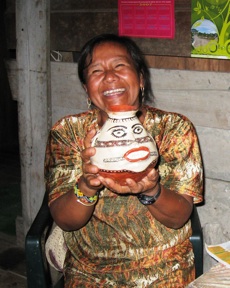 Esthela is a Kichwa woman living in Puyo, having left her jungle home many years ago. Esthela is a gatherer – of yucu when she had a garden, of clay and pigments for her pottery, and of children. She is raising her own children as well as various grandchildren whose parents’ lives have ended tragically and assorted nieces and pretty much anyone who needs a mother. Relationship lines aren’t always easy for me to follow, especially when a half dozen surnames identify most of the inhabitants of the area. Esthela’s home is a simple structure of wooden planks with a tin roof, accessed by a steep set of uneven stairs leading down from the street and an equally steep ramp leading up to her studio and home. Un-informed passersby might stop by her daughter Miriam’s street level gallery on one side or her daughter Marta’s new street level restaurant on the other, but are less likely to venture into Esthela’s realm. Joe has an impressive collection of Esthela’s pots and figures – and was given about a dozen more during our visit. He and I spent an enlightening afternoon with Esthela, reviewing images of her figures and completing information for a database he is keeping. I was reminded yet again of the imprecise art of interpretation and the challenge of resisting the temptation to mold circular thoughts and stories into linear concepts. And if you want to know about the figure whose penis grew and grew and grew and eventually became boa constrictors, ask Joe!
Esthela is a Kichwa woman living in Puyo, having left her jungle home many years ago. Esthela is a gatherer – of yucu when she had a garden, of clay and pigments for her pottery, and of children. She is raising her own children as well as various grandchildren whose parents’ lives have ended tragically and assorted nieces and pretty much anyone who needs a mother. Relationship lines aren’t always easy for me to follow, especially when a half dozen surnames identify most of the inhabitants of the area. Esthela’s home is a simple structure of wooden planks with a tin roof, accessed by a steep set of uneven stairs leading down from the street and an equally steep ramp leading up to her studio and home. Un-informed passersby might stop by her daughter Miriam’s street level gallery on one side or her daughter Marta’s new street level restaurant on the other, but are less likely to venture into Esthela’s realm. Joe has an impressive collection of Esthela’s pots and figures – and was given about a dozen more during our visit. He and I spent an enlightening afternoon with Esthela, reviewing images of her figures and completing information for a database he is keeping. I was reminded yet again of the imprecise art of interpretation and the challenge of resisting the temptation to mold circular thoughts and stories into linear concepts. And if you want to know about the figure whose penis grew and grew and grew and eventually became boa constrictors, ask Joe!
Gladys is my comadre and the wife of Cesar Gualinga. I met Cesar in 1993 when we were both working for Douglas McMeekin, but I did not meet Gladys until my first visit to Jatun Molino in 2004. Gladys is from Napo Province and met Cesar when he was working at Douglas’ Yachana Lodge in Mondana. She moved with him to Molino, and fifteen years and six children later, she has never returned to Napo to visit her family. Though it would only be a day’s journey, it is akin to early pioneers in the U.S. pulling up stakes, leaving their families, and going West. Gladys is shy, but did open up more to me on this, my third visit. Quietly competent is how I would best describe her. Her garden sustains a large extended family and she is forever cooking, washing clothes, serving chicha and nursing a baby. Ceramic making is not practiced much where she grew up, but she took it up when she moved to Molino She rarely has down time, but on Sunday afternoon she did sit with us while we watched Cesar make a fish trap and blew bubbles at the pet monkey. Come to think of it, she was still serving chicha, tending her as yet unnamed baby and keeping a close eye on 3-year old Charley as he cut palm leaves with a butcher knife. She told me that with this baby, labor did not progress and it was determined that the baby was breech. Cesar was not there and since there is no midwife in Molino, she was loaded into a canoe and taken a couple of hours upstream to Sarayacu where a midwife was able to turn the baby. Gladys probably does not consider herself extraordinary, but I do.
Linda has spent her entire life in Jatun Molino. She is best known as an accomplished potter and she can often be seen sitting on a low stool, forming or painstakingly painting a mucawa with a small brush made from a few strands of her own hair. Using a tiny stick and liquid from a huitoc seed, she also paints intricate designs on her face and our arms or faces. I learned the hard way that these temporary tattoos easily last three weeks, so after my first visit I limit them to my arms. Years before I met Linda, I got word through Joe that she had been bitten by a fer-de-lance, the deadliest snake in the rainforest. She had been evacuated to the hospital by missionary plane and her brothers were working in the hospital to pay her bill which meant they were not home hunting, fishing and caring for their families. Through Partners, we raised $1500 to pay off the bill. Until this trip, I had never seen Linda without her rubber boots on. From the knee down, Linda’s leg is a mass of scar tissue that looks to be the result of a terrible burn, but is actually the scarring from the extensive tissue damage of the snake bite. There is also a large hole in the top of her foot – the result of an earlier snake bite as a child. She walks with a distinct hitch in her gait. As if this burden weren’t enough, Linda’s husband fell ill and died suddenly a couple of years ago while preparing a garden site. She and her daughter live with Cesar, his wife and six children, and the grandmother. Linda’s constant companion is a small monkey that snuggles on her shoulder and peeps out from beneath her hair.
Even if this was my last trip to the Ecuadorian jungle, these women have made an impression that will last a lifetime.
Kay Roberts, Executive Director of Kentucky Ecuador Partners
Summer 2012
Oh the Places You’ll Go!
The following is a series of posts from Ecuador by Jazmine Shoup, the recipient of Partners 2012 Ecuadorian Education Abroad Scholarship. Jazzy is traveling with the UK Honors Program lead by Kentucky Ecuador Partners Education chair, Dr. Larry Grabau.
A few days away!
May, 12, 2012
Week one!!
May, 19, 2012
These last two days have also been filled with incredible experiences! We were able to travel to the equator and learn about it! Very interesting! Then we went shopping to Otovalo and were able to buy so many cool textiles! Purses, bags, scarves, cups, paintings, sweaters, jewelry! You name it, they had it. And it was all hand crafted and beautiful! After Otovalo we had our one night home stay with a local family! We stayed with a family that had a mom and two daughters, all of whom were so kind and generous! The home stay was so much fun! We were able to help with preparing the tratiditional meal, and chat with the family in Spanish! Then we played UNO and just had a great time laughing and being with one another! Today was also a great day! We went for a morning hike in the Andes mountains! It was too beautiful for words! A picture couldn’t even do it justice! It’s something I would recommend everyone doing!! After that we went to Otovalo and visited with a man who hand crafted wool and wool textiles, and then to a house where they made hand crafted Ecuadorean instruments! I wish I could write more, but internet time is limited, so I will keep writing with updates as soon as I can!!
So many more adventures to have!!!!!!
Only in Ecuador!
May, 25, 2012
So now I am on to another day! And boy oh boy was this day exciting! We played with monkeys, hiked through the Amazon jungle, experimented with Amazonial medicinal treatments, swam in an incredible waterfall in the jungle, and visitd with a local village where we were able to have traditional markings of their people painted on our faces! So to say the least, the day was some what surreal and incredibly amazing! I have simply fallen in love with the culture, people, and beauty of Ecuador! Until another day!
Uk Study Abroad Trip
Hola from Ecuador!
May 18, 2012
University of Kentucky Study Abroad Trip
Skinner’s Dental Project
The following article on Partners members Ruthi and Rankin Skinner appeared in Perspectives, a quarterly magazine published by The University of Kentucky College of Dentistry.
Rankin Skinner was just a young boy working on his grandfather’s farm when the spirit of volunteerism and helping his neighbors was first instilled in him, as he saw neighbors helping neighbors as needed sowing, growing and harvesting crops.
Skinner, a 1969 graduate of the University of Kentucky College of Dentistry, has dedicated his life – and his passion for dentistry to the people of Kentucky and far beyond.
“I learned you can’t just be involved in your own life, you have to help out others in need,” Skinner said. “A life of service is where you are happiest and it’s a part of my life.”
Skinner’s career in dentistry began with the U.S. Navy right after graduation from the College of Dentistry until he went into private practice in Winchester, Kentucky in 1971. Over the course of the past 40 years, Skinner has been actively involved with countless volunteer organizations, including Partners of the Americas, since 1985.
Partners of the Americas is an international network that connects individuals, volunteers, institutions, businesses and communities to serve others through lasting partnerships. Currently, Partners has 120 volunteer chapters linked in 60 partnerships. Chapters in the U.S. form partnerships with chapters in countries or states in Latin America and the Caribbean. Each chapter is a private, non-profit institution that works to improve the quality of life of others. One such U.S. chapter is the Kentucky/ Ecuador Partners.
In 2002, Skinner and his fellow volunteers with Partners started the Kentucky/Ecuador Dental Sealant Project, working with 15 clinics in the capital city of Quito and another 15 clinics in Ibarra and surrounding communities. Ibarra is Winchester, Kentucky’s Sister City.
 Dental decay in Ecuador is in the 85 percent range. In the United States, the national average is 22 percent and in Kentucky it is about 50 percent, with significantly higher rates in some areas. The goal of the Kentucky/ Ecuador Partner Sealant Project is to significantly improve children’s dental health through education, regular cleanings, and fluoride varnish and dental sealant application.
Dental decay in Ecuador is in the 85 percent range. In the United States, the national average is 22 percent and in Kentucky it is about 50 percent, with significantly higher rates in some areas. The goal of the Kentucky/ Ecuador Partner Sealant Project is to significantly improve children’s dental health through education, regular cleanings, and fluoride varnish and dental sealant application.
Skinner’s group hastrained 65 dentists to place sealants and later, fluoride varnish in each of these cities. They provided the material and the government dentists placed it and created a partnership with participating schools, local governments and most importantly, parents. After five years, a dramatic 50 -78 percent drop in decay was noted, from responding clinics.
 Skinner’s volunteer work with Partners of the Americas is acually a family affair that involves his wife, Ruthi; their son and daughter-in-law, Ian and Jill; their daughter and son-in-law, Erin and David Smith; and Rankin’s brother and sister-in-law, Donnie and Roberta. The family was honored as the FamilyAward Winners for 2009 by United Way of the
Skinner’s volunteer work with Partners of the Americas is acually a family affair that involves his wife, Ruthi; their son and daughter-in-law, Ian and Jill; their daughter and son-in-law, Erin and David Smith; and Rankin’s brother and sister-in-law, Donnie and Roberta. The family was honored as the FamilyAward Winners for 2009 by United Way of the


